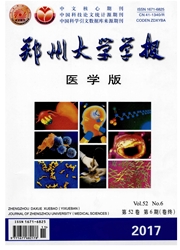

 中文摘要:
中文摘要:
目的:利用同源重组方法将外源选择标记基因转入杜氏盐藻叶绿体中并表达。方法:以光非依赖性的原叶绿素酸酯还原酶chlN基因为同源片段,以氯霉素乙酰转移酶(cat)基因和除草剂草丁膦(PPT)抗性bar基因为选择标记,构建盐藻叶绿体转化载体pchlN-CAT-BAR,并通过基因枪法转入野生型盐藻细胞,筛选转化藻株。对转化株和野生对照组的细胞计数结果进行统计学分析。结果:在200mg/L氯霉素的选择下,野生型盐藻12d左右死亡,转化藻仍正常生长,再经4mg/LPPT继代筛选3~5代,得到表达氯霉素和PPT抗性的盐藻转化株。盐藻转化株和野生株1个月内藻株生长差异有统计学意义(P〈0.05)。结论:以chlN基因作为同源片段构建盐藻叶绿体转化载体是可行的。
 英文摘要:
英文摘要:
Aim:To transfer and express exogenous selective mark genes in the chloroplast of Dunaliella salina(D. salina) by homologous recombination.Methods:By using chloramphenicol acetyltransferase gene(cat) and herbicide phosphinothricin(PPT)resistant gene(bar) as selective mark genes, and the chlN, one of light-independent protochlorophyllide reductase genes,as homologous segment, a transformation vector pchlN-CAT-BAR for the chloroplast of D.salina was constructed,and introduced into the wild type cells of D.salina by microprojectile delivery.Results: The transformants of D.salina survived under the selection pressure of chloramphenicol at 200 mg/L, while the wild type cells died about 12 days after the transformation.The stable transformants were obtained by the selection of 4 mg/L PPT for 3~5 generations.The statistical analysis showed that there was a significant difference in proliferation between transformants and wild-type cells of D.salina under the selected pressures(P0.05).Conclusion:It is available to construct transformation vector for D.salina chloroplast using the chlN gene as homologous segment.
 同期刊论文项目
同期刊论文项目
 同项目期刊论文
同项目期刊论文
 期刊信息
期刊信息
